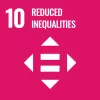The main goal of the initiative is to promote the various opportunities that the EU offers to young people for going abroad together with ESN brand and services towards different stakeholders.
In particular, the aim of the contest (ITECE) is to introduce the outgoing students to the Erasmus Generation. It is a healthy competition that involves international topics. It is the first of the many challenges that students will face during their Erasmus journey, therefore this is the starting point in their process of broadening their minds and starting to create a borderless view of the world.
While the main goal of AskErasmus is to support students as much as possible in the most delicate moment of their mobility period. Working alongside a volunteer allows the student to get in tune with the other and create a friendly relationship compared to the one that could be created with another figure.
The programme ESN Italy 4 Mobility is made of a series of initiatives to promote mobility (local and National events, conferences, round tables, partnerships etc.) that are crowned by two main national projects: Il Tuo Erasmus con ESN (Your Erasmus with ESN) and AskErasmus. The first is a contest dedicated to future outgoing students to make mobility more accessible and to strengthen the collaboration between local ESN Sections and Universities; the latter is an ongoing project to support outgoing students before and during the departure.
In particular, the contest called "Il Tuo Erasmus con ESN" (hereafter ITECE) in a competition in which the contestants have to write an essay on a given topic in 3 hours in order to win an additional financial contribution of €1000 to go on Erasmus. Through the allocation of 3 grants for the winners of the contest, the event aspires to convince more and more students to join the competition and reflect about different aspects concerning the European Union, the Erasmus programme and the so-called ‘Erasmus generation’ and many more ‘secondary’ topics connected to those.
For its 10th anniversary the contest was finally held physically again after 2 online editions due to Covid-19. It took place in almost every University that has an ESN Section (45 cities), but in order to make it as accessible as possible:
- it was open to students regurarly enrolled at one of the Italian Universities in possession of the Erasmus Charter for Higher Education;
- participants could choose to take the test in a different university/city other than their own;
- the contest could be undertaken both in Italian and English (so essays can be draft both in Italian and English);
- participants with specific needs (disability or SLD - Specific Learning Disorders) could also join and use a laptop or auxiliary tools to draft the essay.
On the day of the Contest, participants are given a presentation in which they are further made aware of the existence of ESN sections that they can get in touch with once they get to their destinations, and of AskErasmus. In the end, 2265 students subscribed to the contest and 751 essays were evaluated by the 3 Committees (the 3 Level Committee is the one that chooses the 3 winning essays and it was composed by personalities coming from different Ministeries and Institutions).
On the other hand, AskErasmus allows outgoing students attending Italian universities to get in touch with an ESN volunteer who has already had their experience in the same Country.
A national team of four volunteers works to create student-volunteer matches. When possible, they try to make the perfect match by combining city, university and interests. From a practical point of view, outgoing students can apply by filling in a form on the AskErasmus page on the ESN Italy website, while volunteers are gathered through an internal form. The match is communicated by email, and then, finally, the volunteer gets in touch with the outgoing student who is then supported throughout the Erasmus, but especially in the pre-departure period, which is often full of doubts and questions.



